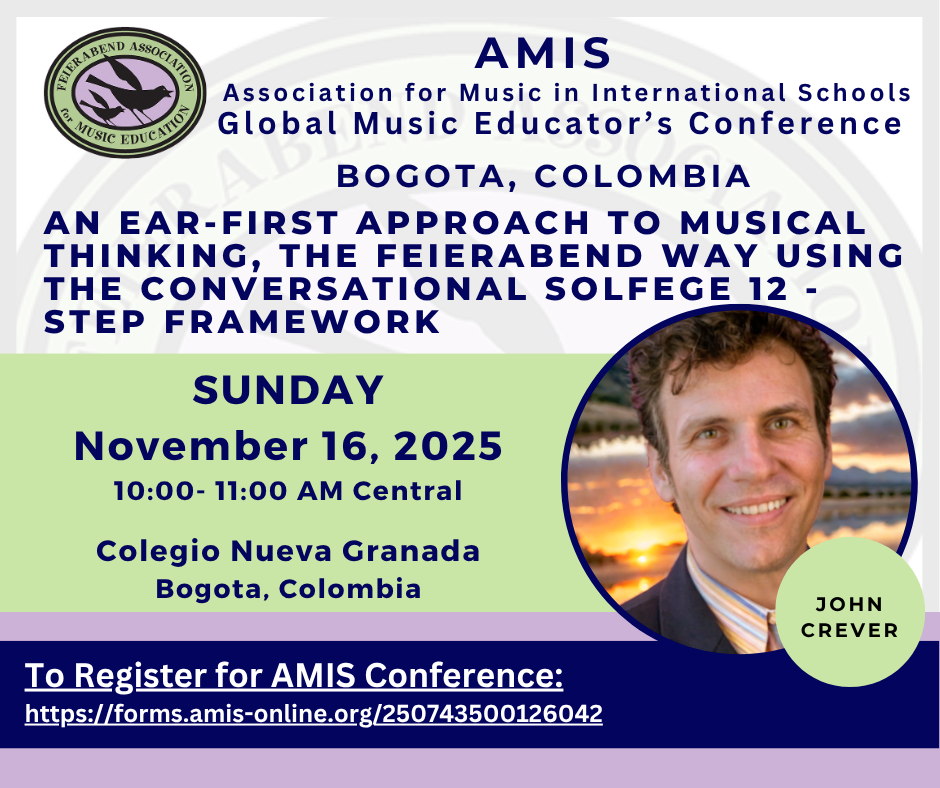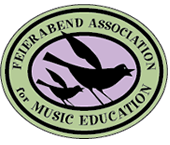

First Steps in Music – Overview
First Steps in Music (™) is a research-based, curricular framework combining the development of singing and movement skills in order to maximize musical aptitude in young children, typically grades PreK-2. The eight-part “workout” is designed to encourage musical independence and creativity through joyful activities and experiences shared with others while developing the prerequisite skills needed for notational literacy: singing in tune, keeping a steady beat, and developing sensitivity to the expressive elements of music.
Session #1: First Steps in Music for Older Learners and Joyful Music Making: Favorite Games, Songs Session #2 Rhymes for Elementary Music
FSM Older Learners and Joyful Music Making
Conversational Solfege – Overview
With the Conversational Solfege approach, music literacy starts with an “ear-before-eye” philosophy. Songs are broken down into their component parts and then reassembled so students grow in musical understanding. This session is a basic overview of the 12-step teaching method created by Dr. John M. Feierabend.
How to Host a Family Folk Dance
Hosting a Family Folk Dance is an inclusive, inviting, inexpensive and immediately gratifying experience that provides a wonderful opportunity to build a bridge from school to home and connect to your community in a meaningful and musical way. Learn how to structure and sequence a folk dance that will guarantee an enjoyable and successful experience for all members of your school community. Learn effective strategies that make learning each dance effortless and immediately satisfying. Participants will be introduced to dances from several countries and cultures around the world. A detailed handout will be provided. Wear your dancing shoes!
First Steps in Part Singing
Emily Maurek
Creative Movement in the Elementary General Music Classroom
Emily Maurek
Vocal Development in Young Children
Tuneful singing requires tuneful thinking and physiological
awareness. To help young children explore the sensation of
singing, we must use developmentally appropriate techniques
and activities that are wonderfully child-like, imaginary and fun.
This lively session will share ideas that immediately engage,
encourage and support young children in their vocal
development
Sing in Parts: By Ear and By Eye
Transitioning from unison to part singing is challenging for upper
elementary/middle school students. Proven strategies first by
ear, then by eye are critical for the preparation of choral singing
in the later grades. This lively session will guide participants
through the sequential steps necessary to guarantee success in
part-singing competency.
Sing in Parts by Ear and by Eye
Transitioning from unison to part singing, melody to harmony, and aural to visual, can be
challenging for upper elementary and middle school students. Proven strategies for
developing part-singing by ear and eye are critical for the preparation of choral singing in
the later grades. But where, and how to begin? This lively participatory session will address
the part-singing challenges that occur in the development of part-singing competency.
Participants will be guided through the sequential steps necessary to guarantee success.
This sequenced approach begins first with the ear, utilizing bass lines, partner songs, vocal
chording, rounds and canons to help strengthen aural recognition, and then, by eye,
through sight-reading, utilizing bass lines and two-part choral arrangements. Participants
will be actively engaged throughout the presentation, experiencing each component. A
handout and choral octavos will be provided. When we introduce students to an
appropriate sequence of learning, they can be on their way to not only sing with
understanding and joy during their school years, but will have the necessary skills to sing
independently, and with others, throughout their life.
